How to grow Actinidia
Deciduous, twining climbers originating from areas of light forest in East Asia. Actinidia are valued for their ornamental, sometimes variegated foliage, their attractive, cup-shaped flowers and their edible fruits.
Of the species grown for their fruit, Actinidia deliciosa is perhaps the best known, more so by its common name - kiwi fruit. This vigorous climber is most likely to bear fruit in a warm, sunny spot in a sheltered garden, or a cool greenhouse. ‘Boskoop’ is a self-fertile cultivar, meaning only one plant is needed for fruiting. Hardy to -5°C.
Actinidia arguta, also known as tara vine, or cocktail kiwi, is hardier (to -15°C and beyond) and bears smooth-skinned fruits which require no peeling. ‘Jumbo’ and ‘Ken’s Red’ are both female cultivars, requiring the presence of a male or self-fertile plant nearby in order to bear fruit. ‘Issai’ is self-fertile.
Actinidia kolomikta is grown primarily for its unique foliage, purple tinged when young, maturing to strikingly variegated heart-shapes with pink and white tips. Though widely used for ornamental purposes, this female species will also produce fruit, again when paired with a male or self-fertile plant nearby. Hardy to -5°C.
Varying in size, though all possessing enough vigour to cover a wall, fence or building if given enough sunshine and warmth.
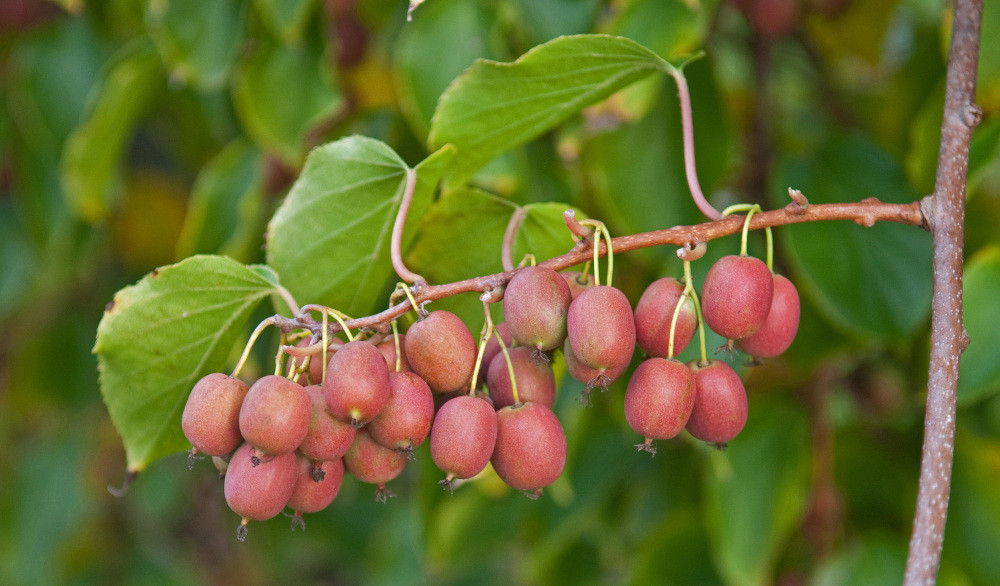
Key Information
Soil pH
Position
Hardiness

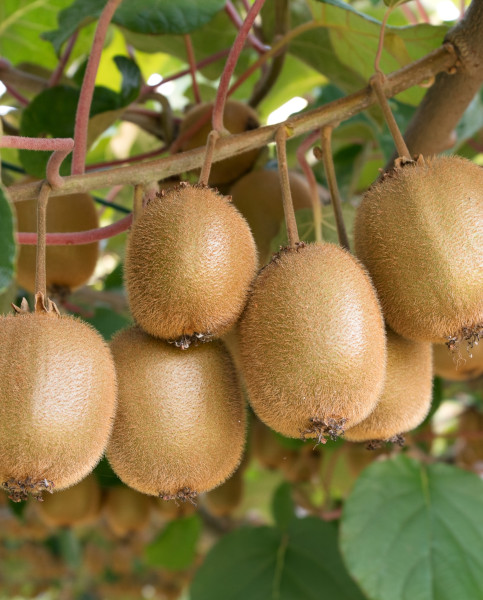
Where & when to plant Actinidia
For best results, plant in spring as conditions begin to warm up.
Planting can be done at other times throughout the year providing a watchful approach to watering is taken until plants are established.
Actinidia does best in a location with rich, fertile soil, full sun and shelter from strong winds. It will require the support of a wall, sturdy fence or garden structure and will need to be trained (tied) to this.
How to plant Actinidia
If required, affix wires or trellis panels to the surface against which your actinidia will be grown
Clear the ground of weeds
Dig an extra deep planting hole and add well-rotted organic matter
Place the plant in the hole
Backfill with soil and gently firm in with foot
Tie growth to supporting wires or structures. When growing actinidia for fruit the ideal shape is an espalier (one main vertical stem, with several pairs of horizontal stems). Remove any growth that does not conform to the desired shape. For ornamental purposes a more informal approach can be taken, simply spread existing growth out evenly and tie to support
Soak well with water
Mulch around the base with well-rotted organic matter
Continue to water well until fully established
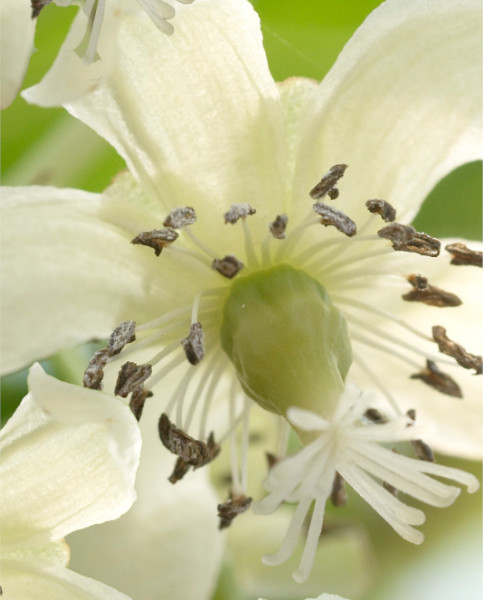
What to plant with Actinidia
If growing actinidia for its fruit, you may yourself struck with inspiration to try more edible delights. What could be better than a sunny patch in your garden bursting with strawberries, blueberries, loganberries and redcurrants?
Alternatively, going down the ornamental route with A. kolomikta, this plant is perhaps at its most stunning when surrounding planting is kept simple. Try a drift of Astrantia ‘Roma’ to complement the pink of the leaves, with some clipped Euonymus japonicus ‘Green Spire’ to finish the look.
If you would like any further planting ideas or growing advice for your actinidia, please contact our friendly and knowledgeable Customer Care Team - we will be more than happy to help you.
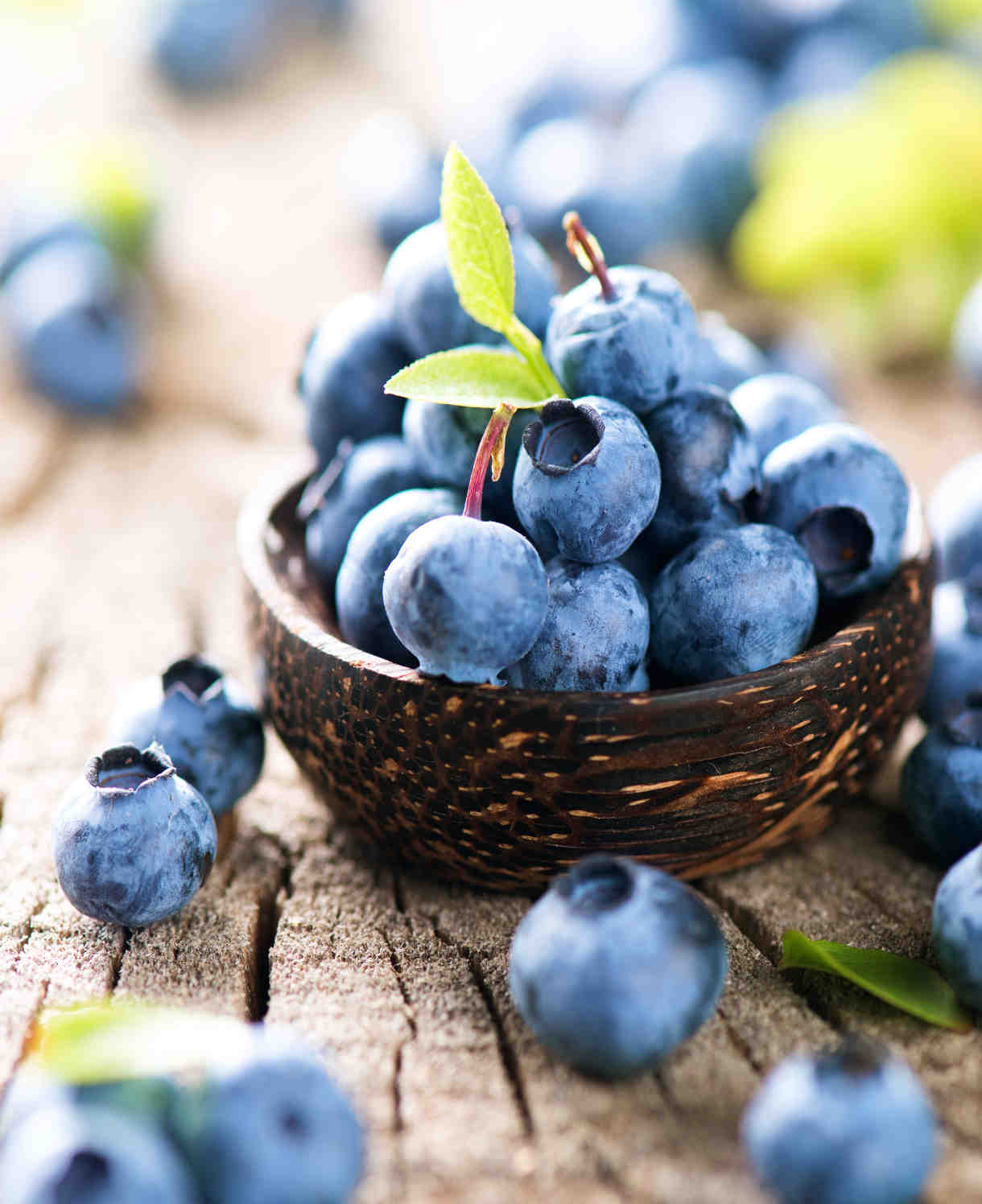
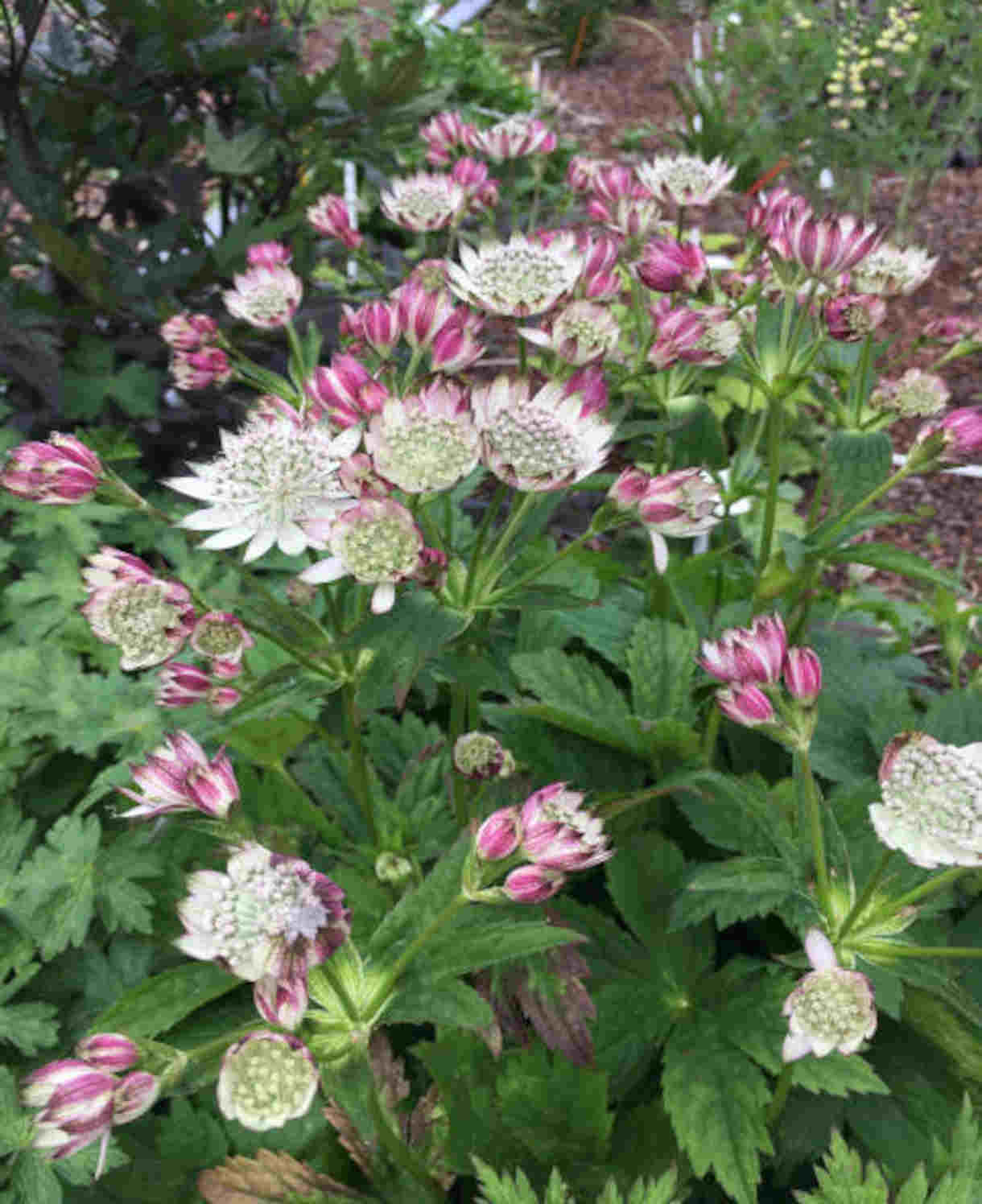
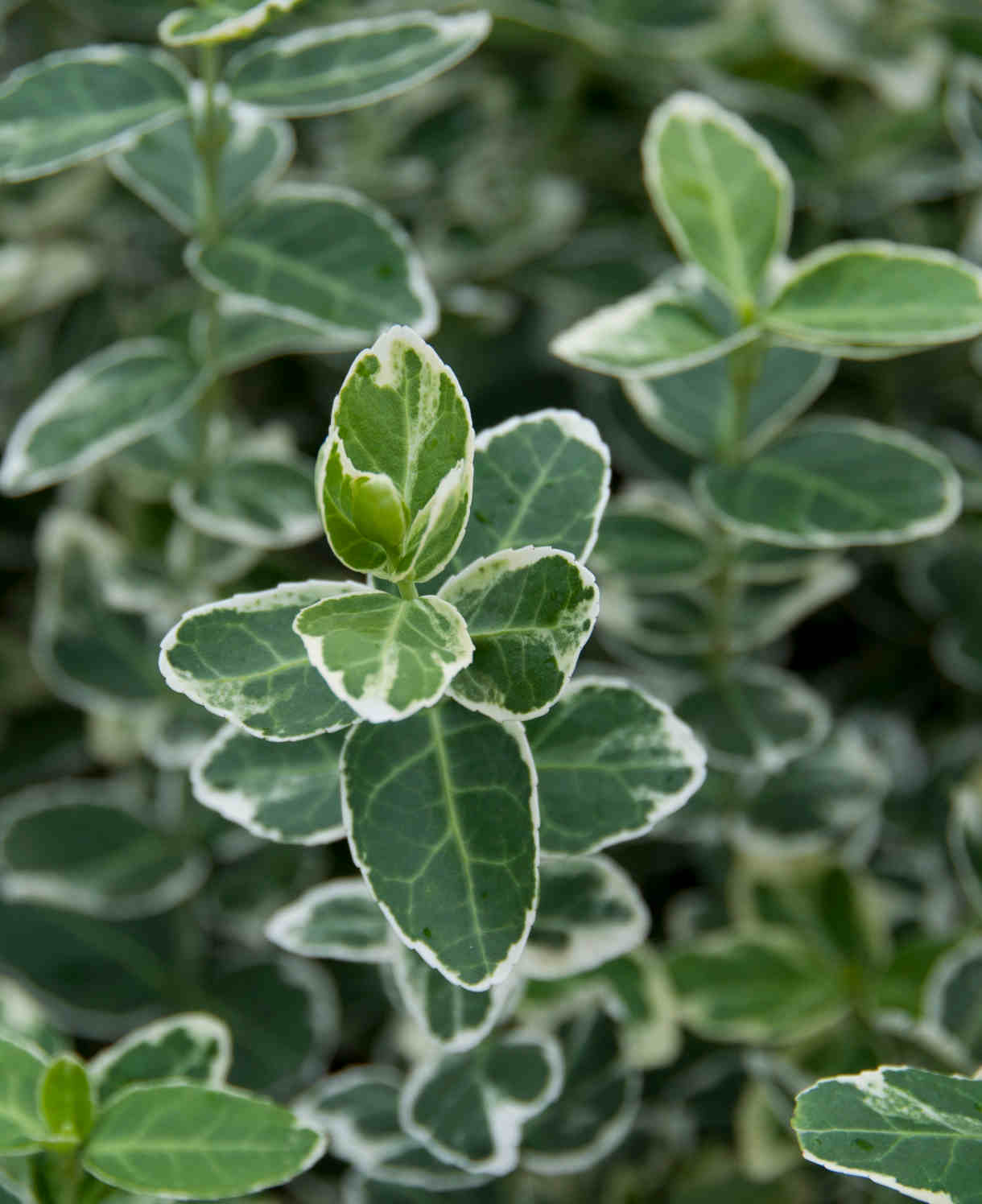
How to care for Actinidia
Pruning and Deadheading
GROWING FOR FRUIT:
In the initial couple of years, pruning should be focussed on establishing the main framework. Once this has been achieved, attention can turn to pruning for fruit production.
Actinidia fruit on the current year’s growth which emerges from last year’s wood. Armed with this knowledge, pruning is simple. In early spring, shorten side shoots to within 3-4 buds of the permanent framework of branches. Take the opportunity to tidy up at the same time, removing overcrowded, diseased or damaged shoots.
Prune again in summer, after fruits have formed, this time to curtail any excess growth. These climbers are vigorous and will usually want to get bigger than the space allotted to them. Now is your chance to keep them in check!
GROWING FOR ORNAMENTAL USE:
Little pruning will be required, other than to maintain size and shape. Do this in early spring if necessary.
Watering
Water well until established, then in very dry periods as required.
Cold Protection
While actinidia are hardy, young shoots can be prone to frost damage. Protect with horticultural fleece if any late frosts are expected.
Pests and Diseases
Actinidia are generally trouble-free.
How to propagate Actinidia
Take semi-ripe cuttings in late summer.
Find non-flowering shoots of the current year’s growth, soft at the tip and woody at the base
Snip off the plant, if possible taking a longer piece than the ideal eventual length of around 10cm (to allow for trimming)
Put cuttings in plastic bag straight away, to prevent drying out
Fill container/s with a perlite-heavy compost mix (at least 50% perlite)
Trim end of cutting to just below a node (point at which leaves grow)
Remove lowest leaves and soft tip, leaving 2-4 leaves
If remaining leaves are large, cut in half with a sharp knife (to reduce water lost through transpiration)
Insert cuttings into compost and water well. You can have several cuttings in the same container if there is enough space to do this without them touching.
Place in a greenhouse if you have one, or covered with a plastic bag on a windowsill if not (out of direct sunlight)
Keep compost moist, not saturated, until cuttings root; look for roots appearing out of the bottom of the container
Gently remove from container, put into individual pots and grow on until large enough to plant out.
Common actinidia questions:
Why is my actinidia not fruiting?
This could be one of several issues:
-
Actinidia can take up to 4 years to bear fruit, therefore you could simply be experiencing a settling in period.
-
Alternatively, a lack of sunlight and warmth could be the cause. Actinidia fruit most reliably in warm, sheltered positions.
-
Finally, consider pollination. Unless a self-fertile variety has been selected, two plants (a female, plus either a male or self-fertile) are required if fruit is to be borne. Check which variety you have; it might be you need to plant a second variety to achieve pollination.




